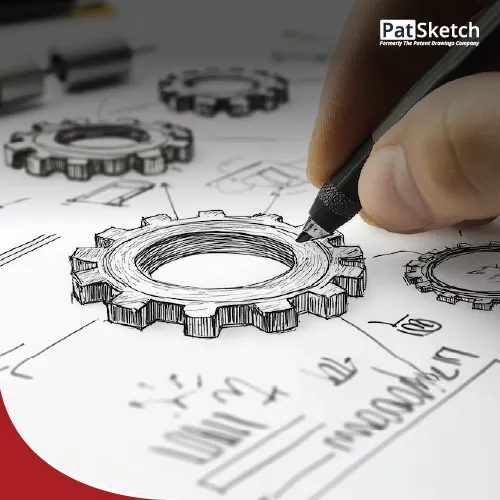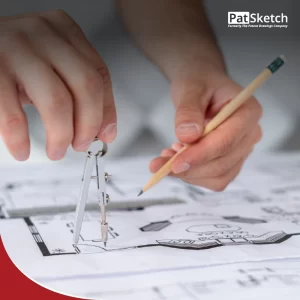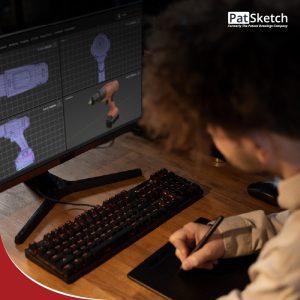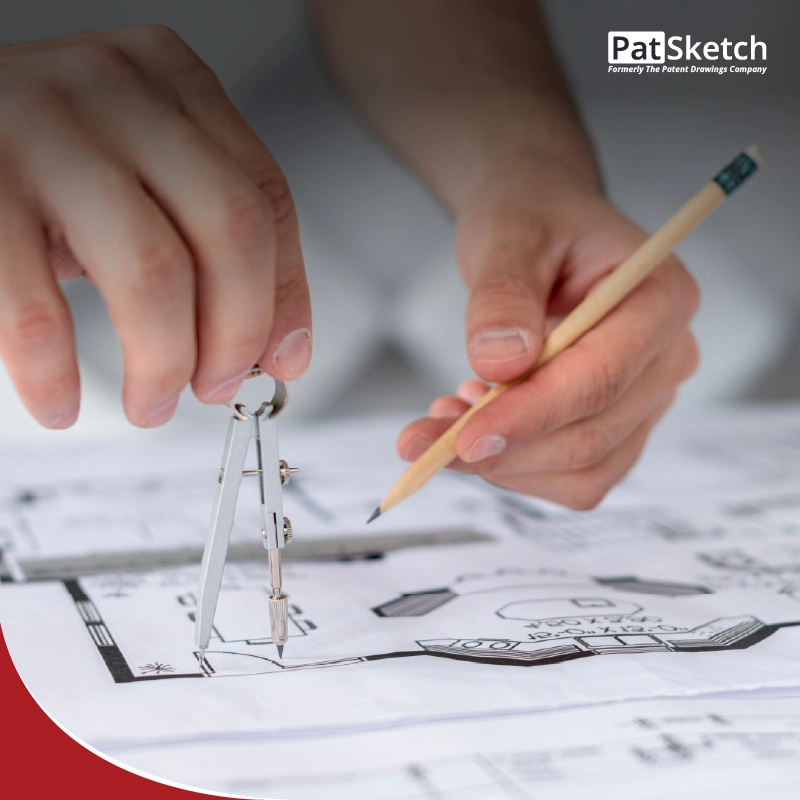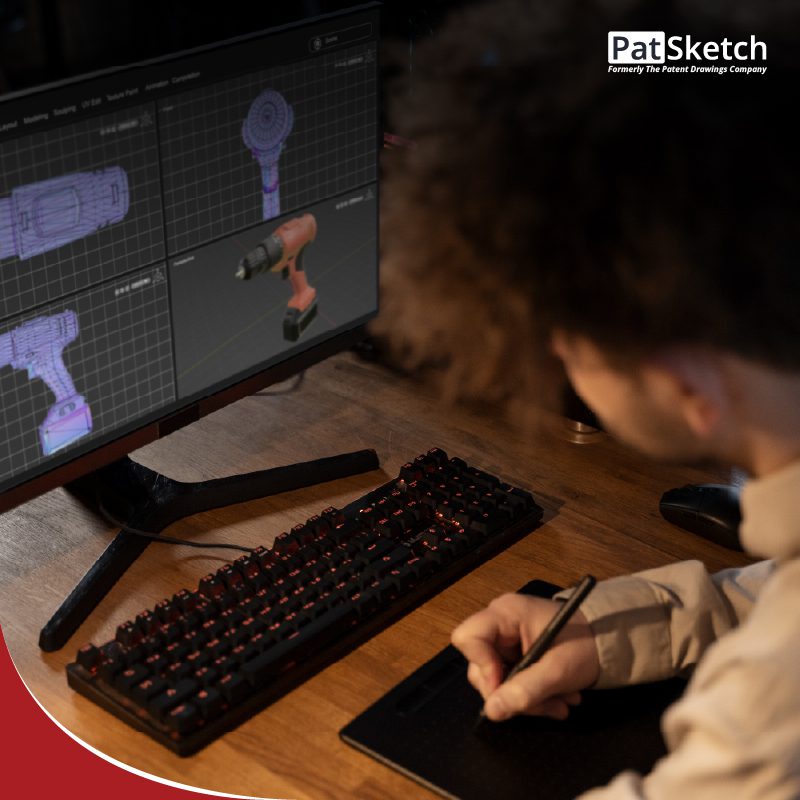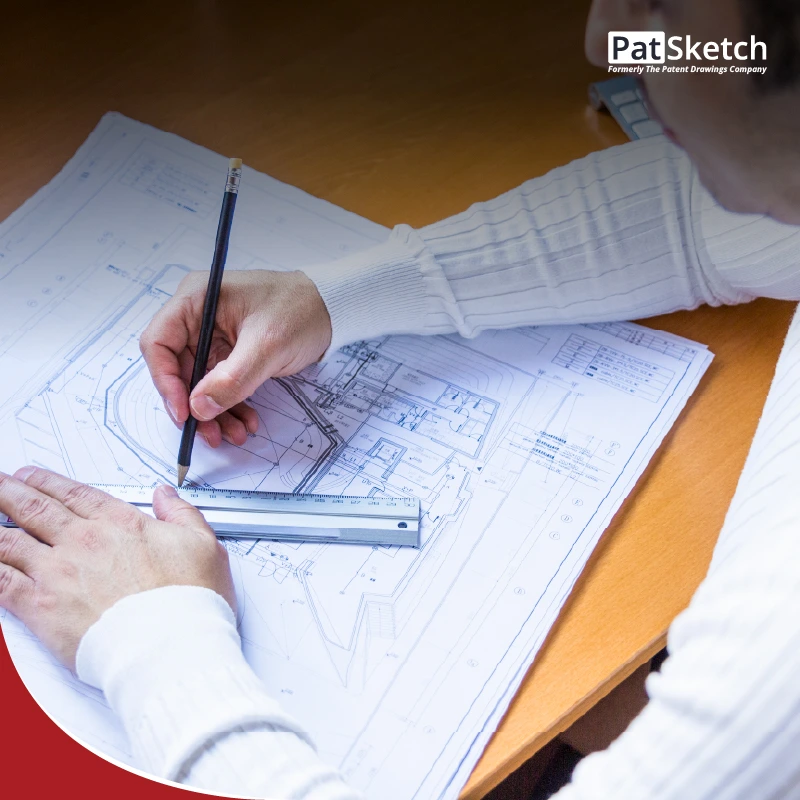Patent drawings aren’t just dry legal diagrams, they’re a fascinating mix of engineering precision and creative design. With a little imagination and the right techniques, these technical illustrations can become stunning works of art, perfect for gifts, exhibitions, marketing materials, or even unique home décor pieces.
Whether you’re a designer, artist, or entrepreneur, turning patent drawings into art is a chance to blend technical accuracy with creative flair. This step-by-step guide will take you from cleaning up a technical image to creating something that inspires, informs, and looks incredible on display.
Also Read: A Guide to Patent Drawings, Draft Descriptions, and Abstracts
Step 1: Begin with Top-Quality Images
Start with the best version of the patent drawing you can find. Ideally, use high-resolution images or, even better, vector formats like SVG, AI, or EPS. Vectors can be scaled infinitely without losing sharpness, making them perfect for large prints or intricate edits.
Pro Tip: Original patent drawings can often be downloaded from official patent databases, or you can request high-quality files directly from the illustrator.
Step 2: Clean & Prep the Drawing
Using professional software like Adobe Illustrator, CorelDRAW, or the free Inkscape, you can:
- Remove excess annotations, numbering, or hatch marks
- Simplify overly technical elements to enhance visual appeal
- Ensure the line work is clean and consistent for easier stylization
Save your cleaned version in a flexible format such as SVG or PDF to allow for future adjustments.
Step 3: Add Artistic Style
Here’s where the magic starts. With Photoshop, Procreate, or other digital art tools, you can:
- Add textures like watercolor, grunge, or metallic finishes
- Adjust line thickness to add depth and variation
- Introduce a color palette that suits your theme or brand
- Blend in photos or other elements for a mixed-media look
Example: For a tech startup gift, you might place a mechanical patent drawing over a textured black background with subtle brand-color highlights.
Step 4: Play with Composition
Go beyond a single illustration, experiment with layouts and visual storytelling:
- Combine several patent drawings into a mosaic or collage
- Add decorative borders, abstract shapes, or thematic backgrounds
- Use spot colors or icons to highlight key invention details
This step is about arranging elements so the design tells the story of the invention’s purpose or history.
Step 5: Infuse Creative Flair
Elevate your piece with touches that make it truly unique:
- Use vibrant or thematic colors to set the mood
- Incorporate mixed media, like painting or hand shading over prints
- Add narrative details, characters, settings, or symbols that contextualize the invention
Step 6: Final Polish & Presentation
When you’re happy with the design:
- Fine-tune contrast, brightness, and overall composition
- Save in print-ready formats (TIFF, PNG, PDF) as well as digital-friendly ones
- Decide how to present it, framed print, poster, canvas, or digital display
Pro Tip: A small title plaque with the patent number and inventor’s name adds authenticity and a professional finish.
Step 7: Respect Legal Boundaries
Most older patents are public domain, but always check the status of the one you’re using. If it’s still under protection, get permission from the rights holder before creating or selling derivative work.
Why This Matters – A Real Example
We once transformed a mechanical patent drawing into a framed artwork for a startup founder. After reviewing 50 related illustrations for accuracy, we cleaned the original, applied a textured black grunge background, and created a finished piece that balanced technical precision with artistic elegance.
Final Thoughts
Transforming patent drawings into art isn’t just about editing, it’s about celebrating human creativity and innovation. With the right tools, techniques, and attention to detail, you can turn a plain technical drawing into something that tells a story, sparks curiosity, and honors the genius behind the invention.
Also Read: 3 Important Elements of a Good Patent Drawing
PatSketch Solution
PatSketch’s illustration professionals identified key concepts of the product and targeted each one of them individually for analysis. Nearly 50 relevant patent art documents went through analysis to perform this task. It’s well worth noting that the patent artwork is simply an imitation that one would frame. Therefore, the team is required to conduct a detailed analysis to know the concept before converting it into a patent art.
After meticulous analysis, PatSketch prepared a detailed drawing with multiple figures. This helped to capture all the invention details in a single sheet. Furthermore, the team added graphical effects to the drawing and evaluated all aspects to explain the entire invention. Once the team identified all important drawings, they created a final sheet with the required graphical artwork.

